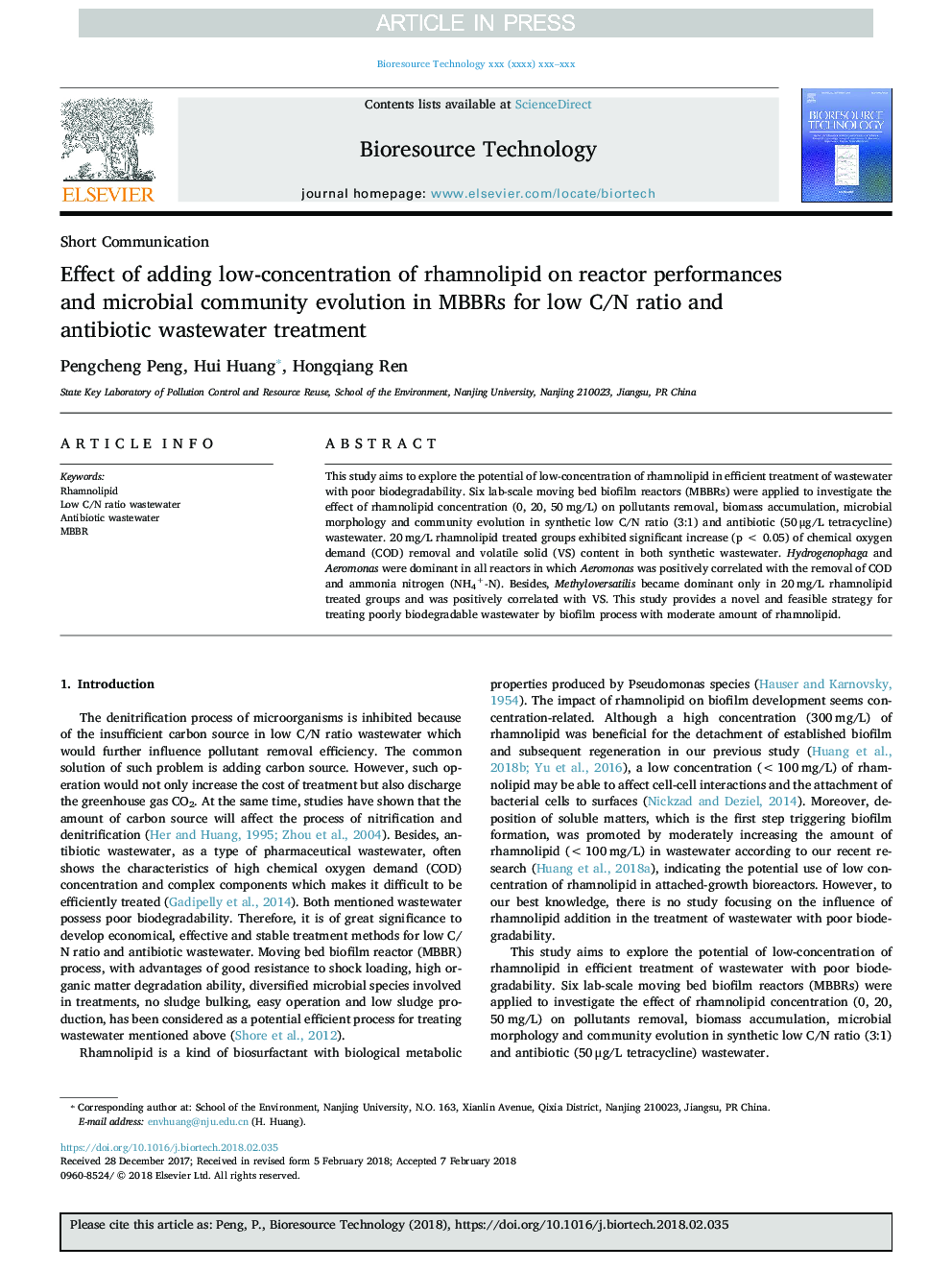| Article ID | Journal | Published Year | Pages | File Type |
|---|---|---|---|---|
| 7067968 | Bioresource Technology | 2018 | 5 Pages |
Abstract
This study aims to explore the potential of low-concentration of rhamnolipid in efficient treatment of wastewater with poor biodegradability. Six lab-scale moving bed biofilm reactors (MBBRs) were applied to investigate the effect of rhamnolipid concentration (0, 20, 50â¯mg/L) on pollutants removal, biomass accumulation, microbial morphology and community evolution in synthetic low C/N ratio (3:1) and antibiotic (50â¯Î¼g/L tetracycline) wastewater. 20â¯mg/L rhamnolipid treated groups exhibited significant increase (pâ¯<â¯0.05) of chemical oxygen demand (COD) removal and volatile solid (VS) content in both synthetic wastewater. Hydrogenophaga and Aeromonas were dominant in all reactors in which Aeromonas was positively correlated with the removal of COD and ammonia nitrogen (NH4+-N). Besides, Methyloversatilis became dominant only in 20â¯mg/L rhamnolipid treated groups and was positively correlated with VS. This study provides a novel and feasible strategy for treating poorly biodegradable wastewater by biofilm process with moderate amount of rhamnolipid.
Keywords
Related Topics
Physical Sciences and Engineering
Chemical Engineering
Process Chemistry and Technology
Authors
Pengcheng Peng, Hui Huang, Hongqiang Ren,
